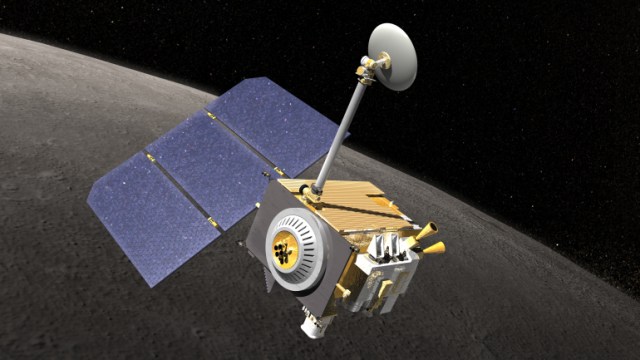Scientists are still not entirely sure how the moon formed, although many hypotheses are discussed in this regard. But now, new findings about mineral deposits in lunar craters may mean that we need to rethink these hypotheses again.
In summary, the results of a new study published in the journal "Earth and Planetary Science Letters" on the first of July, indicates that there are more minerals such as iron and titanium in the moon's craters than we thought, which could mean a rich storehouse With mineral substances beneath the surface of the moon.
Overrule the previous hypothesis
One of the main clues that astronomers have in trying to figure out how our moon appears is how much the moon holds minerals compared to Earth. Any modifications in these readings can tell us more about the origins of the moon.
While the most prevalent hypothesis was that the moon was launched from the Earth’s crust as a result of the massive collision with a third object, the crust of our planet contains less iron oxide than the moon, which scientists are trying to explain.
This new research assumes that there are more mineral substances lurking just below the surface of the moon, which would not make sense if it originated from the Earth's relatively crust of minerals, and this casts doubt on that preferred hypothesis.
"This really raises the question of what this means for these past hypotheses of morphology," says space scientist Issam Hajji of the University of Southern California.
"By improving our understanding of the amount of minerals that are already under the moon, scientists can demystify how they form, how they evolve, and how they contribute to maintaining the viability of Earth," he says.
Metal in the nozzles
The latest study is the result of radar readings from the "Mini-RF" radio-frequency instrument installed on board NASA's "Lunar Reconnaissance Vehicle", which is currently orbiting the moon.
In the course of searching for ice, the "Mini-RF" was occupied by measuring the dielectric constant, an electrical property of lunar soil inside the craters.
Then the researchers noted that the level was raised as the size of the craters increased, even craters with a diameter of 5 kilometers (3.1 miles). In larger craters, the dielectric constant is observed.
Follow-up analysis using data from other tools and spacecraft confirmed that large nozzles contain more minerals, perhaps because they dig deeper into the moon’s surface. This indicates that beneath the surface - which is relatively free of minerals - much could be found.
We are still discovering what's new
"This exciting result from Mini-RF shows that even after 11 years working on the moon, we are still discovering the new about the ancient history of our closest neighbor," says planetary scientist Noah Petro, from NASA's Goddard Space Flight Center.
"The mini-RF data is incredibly valuable to what it tells us about the properties of the lunar surface, but we use this data to infer what was happening more than 4.5 billion years ago," he says.
Of course there is still a lot of uncertainty when it comes to looking at this limit and trying to determine how complicated how the moon first fell into Earth's orbit.
Further research is already under way to ascertain whether this link between more minerals and larger craters is also true in the southern half of the moon.
It is possible that the moon was created from a material much deeper inside the Earth than previously thought, or that these additional minerals are a result of the molten moon’s surface that gradually cools.
Moons and the evolution of planets
There are very few acceptable possibilities and many questions remain, but publishing results like these helps to remove some unknowns about the moon and where it came from, which should lead to better hypotheses in the future.
This applies to other moons in the solar system as well, as well as our moon.
As Hajji says, "Our solar system alone contains more than 200 moons, so understanding the crucial role these moons play in the formation and evolution of the planets around them can give us deeper insights into how and where conditions of life outside Earth can be formed, and how they appear." .

